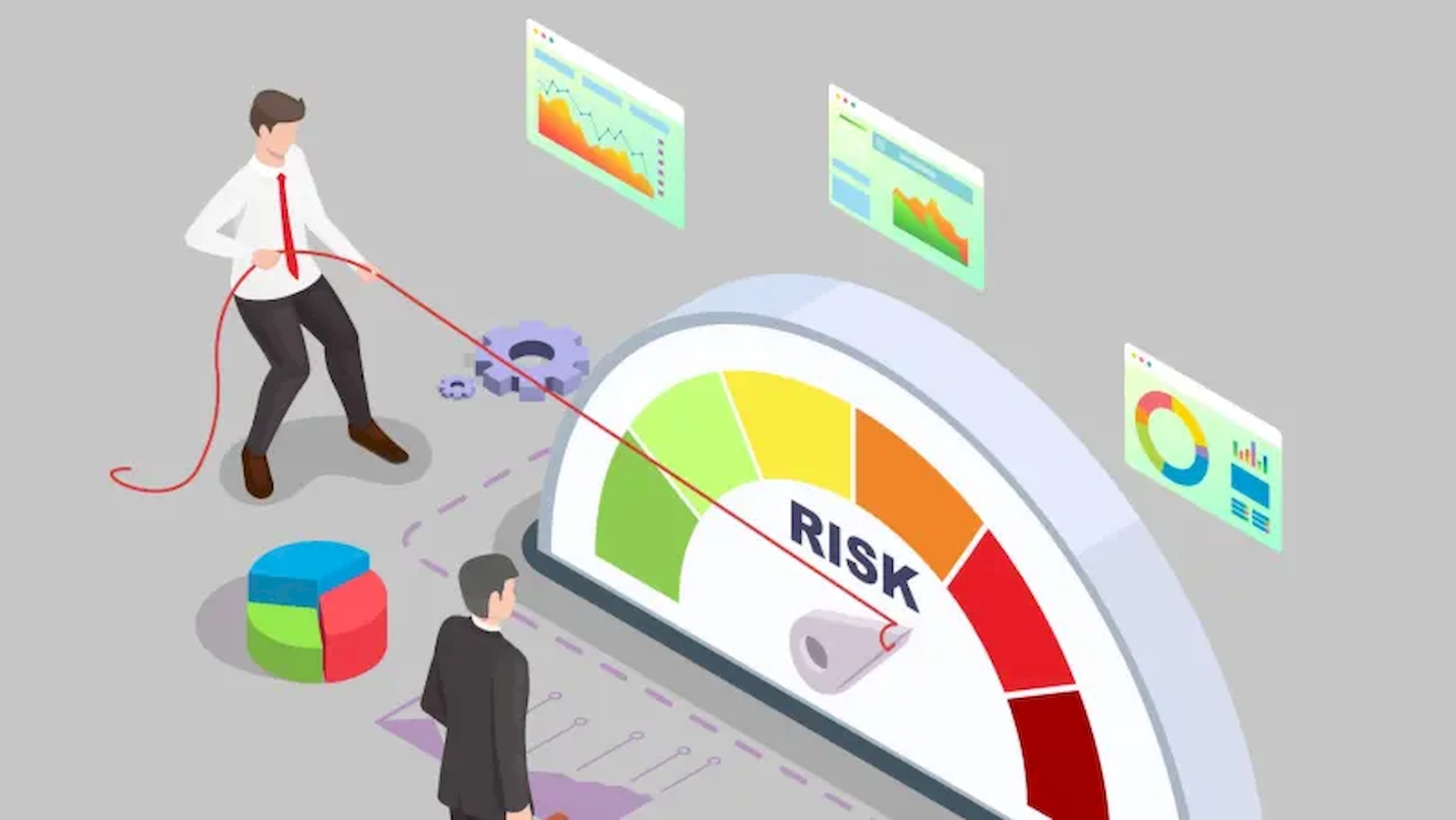
- Details
- Written by: Carlos Delgado
One very interesting, or actually scary, situation presents itself when a contractor makes a big mistake with its estimation for a bidding process. Of course I mean a dangerously low estimation for a Lump Sum bid, because an extremely high estimation would cause the contractor to lose the bid and everybody will go into another business.
We all can imagine that the first thing that will happen is an increase in the success chances of the contractor's proposal.
Typically for an important project, an owner (or client) carries a formal bidding process with several bidders, no less than three and probably five respected and prequalified bidders. In that case, the owner's team would be in the position of detecting extremely low or extremely high proposals from the bidders.
“We all can imagine that the first thing that will happen is an increase in the success chances of the contractor’s proposal”
As mentioned before, a bid with a very high price would be generally discarded by the client. Of course, if that bidder is preferred for some reason such as having the highest technical qualification or specific expertise, it is possible for the client to give some feedback to that bidder and offer the chance of a revised proposal. That would be possible in the private market, but not in public bids for government projects.
When a bid is too low, an interesting scenario appears. The client can choose between inform the bidder that its proposal might have a problem (once again, only in the private market) and give that bidder the chance of a revised proposal and, after confirming the bidder's financial capability, award the project to the lowest proposal.
The thing is, the client knows with a high degree of certainty that an extremely low proposal has a problem and the contractor will lose money, will have problems in performing the project and might not complete it. Some clients can take -little- comfort in financial guarantees such as performing bonds issued by banks and contract provisions such as intervention and the capacity of selecting a new contractor to finish the project with all costs charged to the low-cost-awarded original contractor.
In the real world, no bank guarantee is enough compensation for an incomplete project, bank guarantees are designed to discourage a contractor from abandoning the project. On the other hand, interventions and change of contractor are no easy feats.
Furthermore, even if the change of contractor goes smoothly, what about the technical guarantee of the performed construction? A second contractor that needs to complete work initiated by a previous contractor would hardly give any guarantee due to initial conditions of the work not under its control and the original contractor would very likely use all means at its disposal for releasing itself from the responsibility of work that has been touched or completed by third parties. Even though the contract might include provisions related to responsibility for the work in case of intervention or change of contractor by default of the original contractor, those provisions would be very difficult to put in practice.
And what about the ethical connotations of this situation? If a client has a reasonable certainty that a bidder made a mistake and will lose money if awarded, is it ethical to let that contractor enter in a problem with no warning just because the client knows that that contractor has enough financial strength as to absorb the loss? What about the good faith in the contract relationship?
There is another angle to this situation. If the real cost of the project -very likely- is closer to where most of the different bids converge, is it valid for a client to pay less than the real cost just because one bidder made a mistake?
The truth is that contractors are deemed as specialists in the estimation of construction works and have usually far better estimation capabilities than clients. However, clients have access to information not available to bidders: the complete set of proposals and the bid comparison chart.
Responsible clients address these issues with a technical and ethical approach. First, it is a good practice to have an independent estimation of the project cost before the bidding process starts. Secondly, bidding templates that allow for detailed comparison of the works to be performed can help in narrowing down the source of differences and potencial mistakes. And, of course, if it becomes apparent that some bidder made a mistake, to give warning by pointing out such situation is highly advisable, not only for the bidder, but also for the client.
Client and contractor are actually partners: the client needs the project and has the required financial sources, whereas the contractor has the knowledge and the means to transform the project documents into a reality. Partners should collaborate to the common goal of a successful project.
In times of change, when agility and economy are needed at all levels, the use of specialized services provides that precise mix of capacity, effectiveness and efficiency that organizations need to succeed.
At DC&R we are able to meet these requirements with professional solvency and the experience of more than 30 years in complex engineering and construction environments for heavy industrial markets of high demand such as mining, gas & oil, or energy, as well as for infrastructure and commerce.
DC&R also offers technical assistance services to businesses that need to interact with engineering and construction companies, from tender and project management to contract administration.

- Details
- Written by: Carlos Delgado
Quite often some projects are commercially agreed without proper contract review. Some other times, the main technical feature of the project is not in line with the technical capabilities of the contractor. Even worse, both situations can happen simultaneously.
Obviously, there is a first time for everything and a contractor has the right, even the obligation, to learn, to acquire new capabilities and to expand into new territories. But that is not what we are talking about. The issue we discuss here is the huge responsibility in the hands of the commercial area.
There is a first time for everything and a contractor has the right, even the obligation, to learn, to acquire new capabilities and expand into new territories.
The thing is, due to its enormous impact in the company, the commercial area needs to be closely supervised by the senior management. The chief commercial officer (CCO) needs to have full knowledge of the company capabilities, its intended markets and its commercial and contract policies. This includes some idea about the contracting capacity and how and when the commercial area is required to get authorization before issuing a proposal.
The commercial area is the first line in charge of the company strategy. This area researches the market and should identify appropriate opportunities, either in line with the current contractor's capacities or with the capacities planned to be acquired, in the intended markets and within the company's contracting capacity.
Senior management guidelines should be issued detailing target markets, type of work intended to perform, range of contract amounts able to be handled by the company and even type of client. It can be really different to deal with a private mining company, in comparison with a public agency or with an international multilateral entity.
Criteria to ask for previous approval before committing company's resources to prepare a proposal should also be understood, as well as the proposal's review and approval process and the features that can cause to "red flag" a bid.
Client's contractual provisions included in the bid information package could usually be the reason for red flags. It is therefore necessary for the commercial representative in charge of the opportunity to familiarize himself or herself with the contract draft and include some comments before (hopefully!) sending it to the legal area for review.
Some of the client's instructions or expectations included in the technical information package, such as an extremely short delivery time or special technical requirements, can also be reasons for red flags. However, those features could hardly be detected by the commercial area, so it should be a duty of the technical area in charge of the proposal to detect such situations and report them to the commercial area for an integrated assessment.
Regular commercial presentations to the senior management should be held to summarize current commercial opportunities, its status and red flags and discuss if some of those opportunities should be abandoned or there will be a conscious and integrated effort by the company to acquire the capabilities and resources needed, and secure the financial means to pursue any challenging opportunity. Whatever the decision, the risk must be properly assessed and the approval of senior management formally issued.
Finally, the commercial area and the CCO should be held accountable for their work and for the consequences of failing to analyze, assess and obtain approval for red-flagged opportunities or the lack in the detection of risks due to not following an existing proper procedure.
In times of change, when agility and economy are needed at all levels, the use of specialized services provides that precise mix of capacity, effectiveness and efficiency that organizations need to succeed.
At DC&R we are able to meet these requirements with professional solvency and the experience of more than 30 years in complex engineering and construction environments for heavy industrial markets of high demand such as mining, gas & oil, or energy, as well as for infrastructure and commerce.
DC&R also offers technical assistance services to businesses that need to interact with engineering and construction companies, from tender and project management to contract administration.

- Details
- Written by: Administrator
Virtual Design and Construction (VDC) is a cutting-edge approach to engineering and construction that has revolutionized the way high-standard industrial markets, including mining, gas & oil, airports, and transport infrastructure, plan and execute their projects. VDC integrates technology, data, and project management methodologies to enhance efficiency, reduce costs, and improve
the overall quality of construction projects. In this article, we will delve into the principles and various applications of VDC in the industrial sector.
Principles of VDC
VDC is founded on several key principles, which collectively empower professionals in the engineering and construction industry to achieve better results:
- Digital Twin Technology: VDC leverages the creation of digital twins, which are virtual representations of physical assets or systems. These digital twins are highly detailed, 3D models that accurately simulate the real-world structures or equipment. This technology enables engineers and project managers to visualize and analyze every aspect of a project before actual construction begins.
- Integrated Data Management: VDC integrates various data sources, including architectural plans, structural designs, and project schedules. This centralized data management system ensures that all stakeholders have access to the most up-to-date information, reducing errors and miscommunication.
- Collaborative Workflows: VDC encourages collaboration among multidisciplinary teams.Engineers, architects, project managers, and contractors can work together seamlessly, sharing insights and making real-time adjustments to the project as needed.
- Simulation and Analysis: VDC allows for in-depth simulations and analysis. It can predict how a building will perform under various conditions, such as structural stresses, environmental factors, or occupant behavior. This predictive analysis enables proactive decision-making.
- Clash Detection: VDC employs clash detection tools to identify conflicts or clashes in design before they become on-site issues. This proactive approach helps in avoiding costly rework and delays.
Applications of VDC
VDC finds numerous applications in various high-standard industrial markets:
- Mining: In the mining industry, VDC is used to plan and design mining operations, including the layout of mines, extraction processes, and safety measures. It enables the efficient management of resources, reduces risks, and optimizes the entire mining process.
- Gas & Oil: VDC is employed in the design and construction of offshore and onshore facilities. It helps in visualizing complex oil rigs, pipelines, and processing plants. With accurate digital representations, potential issues can be addressed in advance.
- Airports: When constructing airports, VDC plays a pivotal role in designing runways, terminal buildings, and other critical infrastructure. It aids in optimizing the layout for efficiency, safety, and passenger experience.
- ransport Infrastructure: VDC is essential for the planning and execution of transportation projects, such as bridges, tunnels, and highways. It allows engineers to visualize traffic flow, assess structural integrity, and plan for maintenance.
- Material Handling Equipment: VDC can be invaluable for optimizing the layout and operation of material handling equipment. It ensures that conveyors, shiploads, and other machinery are placed and utilized efficiently.
- Heavy-Duty Earthmoving Equipment: VDC helps in the design and utilization of heavy-duty earthmoving equipment, ensuring that they are deployed effectively in mining, construction, and other industries. It aids in site planning and equipment management.
In conclusion, Virtual Design and Construction (VDC) is a transformative approach that aligns perfectly with consultancy businesses in the engineering market. Its core principles of digital twins, integrated data management, collaboration, simulation, and clash detection make it an invaluable tool for various industrial markets. VDC's applications span mining, gas & oil, airports, and transport infrastructure. By embracing VDC, it is possible to enhance project management, reduce costs, and ultimately achieve higher standards in industrial construction.
In times of change, when agility and economy are needed at all levels, the use of specialized services provides that precise mix of capacity, effectiveness and efficiency that organizations need to succeed.
At DC&R we are able to meet these requirements with professional solvency and the experience of more than 25 years in complex engineering and construction environments for heavy industrial markets of high demand such as mining, gas & oil, or energy, as well as for infrastructure and commerce.
DC&R also offers technical assistance services to businesses that need to interact with engineering and construction companies, from tender and project management to contract administration.

- Details
- Written by: Carlos Delgado
Let's start with the basics, what is risk management? To be more specific, we could also ask what is risk management in a project?
The diverse literature on the matter usually defines risk management, in a generic way, as an organized, structured approach - scientific, we could say - to plan risk management in the environment in which we are operating.
Now, what is a risk? If we stick to Castilian1, the Dictionary of the Royal Spanish Academy defines it as "Contingency or proximity of damage." Other dictionaries define it as "Possibility of a mishap or misfortune, that someone or something suffers injury or damage." Applying these concepts to the project environment, we are talking about the contingency or possibility of negative effects on them.
As can be seen, official definitions imply that risks often adversely affect, or contain the potential to adversely affect, projects.
However, in the project environment and in other environments such as business management, the concept of “opportunity” has been recognized as the risk of something positive happening, and this term also implies the urgency of taking advantage of such opportunity. SWOT analysis (Strengths, Weaknesses, Opportunities and Threats) is widely known, where Threats are the classic risk and Opportunities the risk with positive potential.
This is clearly seen in the Project Management Institute (PMI) approach stated in the Guide to the Fundamentals of Project Management (PMBOK Guide), Chapter 11: “The objectives of managing project risks are to increase the probability and / or the impact of positive risks and reduce the probability and / or impact of negative risks, in order to optimize the chances of success of the project”.
We are now able to answer that risk management in a project is the systematic and organized process to plan the risk management of said project in such a way that the negative effects are mitigated, and the positive ones are maximized.
Said management process, given its quality as systematic, tends to have certain general steps: planning, risk identification, analysis and response.
Planning implies, first of all, knowing the project and selecting an appropriate methodology. You don't need the same tools for a large, complex project as for a small, simple one. If we are going to design and build a large and complex industrial plant with a large variety of specially imported supplies, it may be worth incorporating numerical methods such as the Monte Carlo analysis to study the effects of supply delays; but that approach would be excessive for the construction of a country house.
This planning must also define the criteria that the organization will use to manage risks:strategies, roles and responsibilities, budget and a time frame.
The identification of risks is often the best-known part of the process, since the most common tool is the use of workshops, in addition to expert judgment and brainstorming, among others. Naturally, knowledge of the project, its limits, restrictions and particularities
is essential, but one of the most critical components is the correct definition of the risk, ensuring that said definition is clear and unambiguous, so that the risk is well understood, that will allow a better analysis and the design of an optimal response.
It is vital to keep in mind that risk identification is an iterative process and that it must be kept up to date, since risks vary over time and with circumstances, so the risk register becomes a “living” document that requires periodic review.
Risk analysis has two complementary approaches: qualitative and quantitative.
The primary objective of qualitative analysis is prioritization of risks. This makes it possible to know which are the risks on which efforts should be focused in the first place, which are the ones that can be taken care of as second priority and which can be simply monitored for later review and action.
Risk prioritization is done by evaluating the combination of probability and impact, typically with the help of a probability and impact matrix, so that risks can be classified into groups according to the highest or lowest value of said combination.
Naturally we must recognize that the qualitative analysis of risks is a process in which there is a level of subjectivity since it is based on the perception of risk by the participants. The use of an experienced facilitator and the heterogeneity of the participants in the process help reduce bias in the analysis.
It is at the end of this analysis that the "owners" of each risk must be assigned. The risk owner is in charge of designing the individual risk management plan and ensuring that the planned response is implemented.
Quantitative analysis draws on the results of qualitative analysis and differs from it because it seeks to quantify, that is, to express numerically, the combined effect of risks and sources of uncertainty on the project.
It is important to note that this type of analysis is not essential for all projects, its use is usually reserved for larger or complex projects, for which the quantification effort is worth it, to the extent that the result of said process helps to allocate budget response plans.
Depending on the complexity, strategic quality, investment amount and other parameters of the project, quantitative analysis can increase its complexity by including high-level numerical tools, risk software, time and resources.
Whether a qualitative or quantitative analysis or both have been performed, the primary objective is risk response planning. This planning consists in the development of strategies, actions and options that allow managing risks during the life of the project, minimizing negative effects and trying to take advantage of opportunities.
In a very basic way, there are four approaches to responding to risks: avoid them, mitigate them, transfer them and accept them.
Avoiding them usually implies changes in the project. For example, if the use of a new technology may have too risky a combination of probability and impact, switching to a proven technology is a valid strategy. This can have effects on the cost of the project and even on the subsequent operational life, but if the risk or, rather, the consequences of its occurrence were too high or unacceptable, the change will have been worth it.
Mitigation consists of taking actions that significantly reduce the negative effects of a risk. Let us imagine that faced with the risk of a failure in the electrical flow, the response plan has considered the introduction of a generation equipment. But this equipment can only meet the basic needs of the project, since serving the total energy would be economically unviable. In this case, and in the event of a power failure, the emergency generator mitigates the risk of stoppage, but does not eliminate it to the extent that some tasks will lack energy. As we can see, when we mitigate a risk, there is a remanent effect. The effect is reduced, but not totally eliminated.
Transfer is a process by which risk is transferred to a third party, usually in exchange for something, typically money. The classic case is that of insurance; insurance is paid that gives us monetary reimbursement for the estimated value of the damage, less a portion called the "deductible". Insurance is not, however, the only transfer strategy. In construction, many clients transfer the risk of managing unions to the builders. The builders, of course, include in the price and lead time offered contingencies that they consider appropriate to manage these risks. The statement "in economics there are no free lunches" is very well known. Everything is paid or the system does not work.
Finally, there is the acceptance of risk. If the combination of probability and impact is low enough, the project decides not to develop a complex response plan and waits for the risk to occur. This should only be done with very little potential risks. For example, the probability that a rainstorm will paralyze a construction on the Peruvian coast is too low to develop a contingency plan; something absolutely different from a similar situation in the mountains or rainforest.
However, accepting risk does not imply a passive attitude. An accepted risk must be, at a minimum, monitored. Returning to the case of rain on the Peruvian coast, in the case of a El Niño or La Niña phenomenon, the rains could become significant.
In conclusion, risk management must be understood today as a fundamental tool for the successful management of projects. Its use must be iterative and permanently updated, since the risks, their consequences and control methods do not remain static. The system requires periodic reviews and appropriate and timely adjustments.
In times of change, when agility and economy are needed at all levels, the use of specialized services provides that precise mix of capacity, effectiveness and efficiency that organizations need to succeed.
At DC&R we are able to meet these requirements with professional solvency and the experience of more than 25 years in complex engineering and construction environments for heavy industrial markets of high demand such as mining, gas & oil, or energy, as well as for infrastructure and commerce.
DC&R also offers technical assistance services to businesses that need to interact with engineering and construction companies, from tender and project management to contract administration.

- Details
- Written by: Carlos Delgado
This article is intended to be understood in the field of engineering and construction projects. Just to be clear and provide some context, this is from the contractor’s standpoint, in its relation to the owner or client.
Quite often, as soon as someone mentions "the contract”, most people in the contractor’s organization start calling the lawyers, whether from internal legal areas or external legal consultancy firms. Few think about showing the first contract drafts to a senior project manager or to any representative of the operations team.
“…the contract negotiation must be carried out by the decision makers, since they have the best knowledge of the project and of their own organization.”
Even fewer people are smart enough to take into consideration the contract draft, sometimes included as part of the bidding documents package, when preparing the contractor's proposal. At most, when the client includes such contract draft in its bidding package, the contractor's commercial team sends that contract draft to their legal area, asking for recommendations to include in the proposal's clarifications. Do not get me wrong: that is not bad, it is fine. But only being fine is not enough at all.
After the contractor is awarded and the contract executed by both parties, the final outcome is that the contractor's project team ends up tied to operational conditions largely unknown. If everything goes well and smoothly during the project execution -which almost never happens- the project is finalized, everybody is happy and no one ever reads the contract.
Unfortunately, that is almost never the case. Reality shows up: some conditions change, the owner needs some adjustments, the contractor falls behind schedule or costs increase usually both situations happen at the same time- and, yes, at that point the project team and the project manager fetch the contract, start reading it and discover that there is going to be very hard to realign the project without bearing some important costs and damaging the contractor's image and commercial relationship with the client.
Of course, any competent contractor will appoint a contract manager as part of the project team, but this is usually after the contract is signed.
Truth be told, in engineering and construction projects the contract is not an issue to be delegated to the lawyers and to the contract manager, after the latter is appointed. The contract is the prime responsibility of the project manager and the project team. A contractor, as an organization, is called contractor just because it performs work under a contract.
As I have mentioned in a previous paper1, those responsible for the contract are those who accept the contract and will perform the corresponding work. We can call them the "decision makers" of the agreement.
Therefore, the contractor's operations area must be involved in the contract draft review to give input to the commercial team that is preparing the proposal. An experienced project manager should include comments to the contract draft before it is sent to the legal area. In such way, the legal area has optimal context for its review, comments and recommendations.
Obviously, the contract negotiation must be carried out by the decision makers (main negotiator), since they have the best knowledge of the project and of their own organization.Contractor's legal area, or external legal consultant, acts here as advisor to the main negotiator and can establish corporate boundaries that the main negotiator cannot exceed.
The main negotiator should be an experienced project manager or operations representative, who knows what can happen on site during the project execution and has a fairly clear idea of the problems the project team would be dealing with.
Finally, the first thing an appointed project manager should do is to read the contract for which he or she will be the ultimate responsible.
In times of change, when agility and economy are needed at all levels, the use of specialized services provides that precise mix of capacity, effectiveness and efficiency that organizations need to succeed.
At DC&R we are able to meet these requirements with professional solvency and the experience of more than 25 years in complex engineering and construction environments for heavy industrial markets of high demand such as mining, gas & oil, or energy, as well as for infrastructure and commerce.
DC&R also offers technical assistance services to businesses that need to interact with engineering and construction companies, from tender and project management to contract administration.
